Introduction
This peg creation walk through is intended to guide anyone through the process of creating and stocking a peg. It will show that the process isn't just about throwing a load of fish stocks into a peg and adjusting until the balance is around 5 oz 4 dr, but about thinking that goes into creating a peg that will fish as closely as possible to the real thing. It will also show how you can give a peg a helping hand in determining how it will fish, still without knowing the true way it will fish.
I will use the FS1 version of the Whiteacres Pollawyn peg, in this walk through as the FS1 version of Whiteacres isn't being converted to Fishsim 2. Also, with this venue, I have accurate detailed information available from Whiteacres, which will help in recreating it for FS2. The only thing I haven't got is experience fishing the venue, which is unfortunate, but have heard many reports back from people who've fished there, which will also help a little as well.
Creating the folders
The first thing to do, is to create the folders for the venue. In the VENUES folder of FS2, i'll create another folder called WACRES. This will hold all the information for the Whiteacres venue, apart from the .ven file that will be created later. By storing all the files for a venue in a single folder, it is a lot easier to remove it individually. I've noticed a few venues have created folders off the SPECIES folder to hold the stock files for a venue, which is okay, but a better arrangement would be to have the stock files for the venue, actually inside the venue folder itself. If you have a set of standard stock files that you use on all, or the majority of your venues, then using the SPECIES folder is okay, as you can use this for many venues to reference the same stock files, but care should be taken in ensuring all remote FS users have got the stocks already there.
Anyway, with the WACRES folder created inside the VENUES folder, there needs to be more folders created inside that : IMAGES, DATA and PEGS. I am not planning on creating any .fsb help files for the venue, so there is no need to create a folder to hold these. If I was to add them later, I could get the JR2 upgrade file to create the FSB folder automatically, anyway. The folder names don't really matter, it's not written in stone that they should be called IMAGES, DATA and PEGS, it just follows conventions that seem to be a de-facto standard already.
The IMAGES and DATA folder are okay as they are, and do not need any further folders steming from them, however the PEGS folder will. Even though i'm only planning on creating a single peg venue for this tutorial, at some point in the future I may decide to add more pegs to the venue, so it's best if the folders are arranged in a way that will allow me to do this easily. With this in mind, Whiteacres is a strange venue, because it consists of various pools, not just a single pool as in most other venues. Each of these pools are different in the way they are stocked, and also, I am informed, on the way the fish behave. One thing I am assuming though here, is that the general fish species behaviour is consistent throughout all the pegs on the same pool. Therefore, i'll create a folder from the PEGS folder called POLLAWYN. This folder will hold all the .stk files that define the species behaviour for the Pollawyn peg. If in the future, I create another peg on Pollawyn, I will be able to reference the same stock files from here. Also, if I choose to create a peg from one of the other pools, then i'll create a seperate folder for it, eg. Python, Sycamore etc..
Also from the PEGS folder, i'll need a place to store the data files for the individual peg records, therefore i'll create another folder called PEG1. As well as storing the peg record data files here, i'll also store the peg stocking file ( .all ). After all the folders have been created, the structure looks something like below, with the folder names in bold being the ones that have been created from the VENUES folder in FS2 :
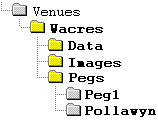
The peg image
Now for the peg image. I have one here for Pollawyn, courtesy of Steve Barratt, and it was the one used in Fishsim version 1. Version one of FS, needed images that were 640 x 480 pixels, version two isn't as strict, however the 480 pixel Y size is still needed, but the X size can be almost any width, as FS2 allows scrolling venues. It is better to make the X size at least 800 pixels and it must always be a width in pixels that is exactly divisible by 4, eg ( 800 / 4 = 200 exactly ). I've got the Pollawyn image at 1024 x 480 pixels, stored in JPG format with Paint Shop Pro. Note, some programs, like Photoshop, store JPG files differently and the Intel JPG library doesn't recognise them, so Paint Shop Pro is a good choice for editing or creating the JPG files in FS2. A picture of the peg image is shown below, i've cut it down here to 320 x 150 pixels, to save time in loading this page.
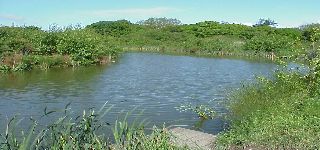
I have the image above named pollawyn.jpg and have put the file inside the IMAGES folder that has been created.
The .ven file
The next thing to do is to create a .ven file for the venue, this goes inside the main venues folder of FS2, along with all the other .ven files that are there. I'll call this one, wacres.ven, as it is pretty meaningful to the venue. .ven files are just simple text files that can be created with a text editor, Windows notepad is a good choice, as it is simple to pick up and get going straight away. The only thing to watch for though using Notepad is that it doesn't append a .txt on the end of your file. If it does, the easiest way to get around it, is to rename the file, deleting the .txt off the end after you've saved it. There are ways to stop Notepad doing this, but that's another matter.
I've entered the following in Notepad, into the wacres.ven file :
[Details]
Name = Whiteacres
Ref = WACRES
Dir = venues/wacres/*.peg
Lastpeg = venues/wacres/last.dat
Creator = Jase & Steve Barratt
Date = February 2001
Records = venues/wacres/
Level = 1.0
Regcode = 786868
[Weather]
Weather = data/uk2.dat
Lookup = venues/wacres/temps.dat
TempModel = 3
Tempfact = 1.0
Starttemp = 20
The Name line is pretty understandable, this is the name that will show up in Fishing Simulator 2 for the venue. The Ref line must contain a unique reference for the venue you are creating, in this case i've chosen WACRES, as it is unique. I also like to keep the venue references to capital letters as well. Remember though, venue references have to be less than 9 characters long otherwise, it could lead to all sorts of erratic problems in FS2.
The Dir line, holds a path string to tell FS2 where to find files describing each peg on the venue. I am going to store the .peg files in the main WACRES folder, and all will have .peg extensions. The *.peg part, simply means, look for any files with .peg as the extension. The creation of the .peg file is the next task on the list, in a moment.
The Lastpeg line, gives the creator of the venue a chance to specify the filename, of the file, where the information on the last peg fished on a venue is to be stored. This file is created and used by FS2, so that when an angler returns to a venue, the default peg will be set as the last one (s)he fished.
The Creator and Date are only used for display purposes in FS2 and anything can be entered in here, normally your name and the date you created or modified the venue.
The Records line contains a directory path, of where the venue records are going to be stored for the venue. There are four venue record data files that get created by FS2, and in this case they will be stored in the VENUES/WACRES folder.
The Level for the venue is currently set at 1.0, this may change later as the venue is created further. I always start at the easiest level and adjust from there, some people start at the hardest level and work back, it's a personal preferrence.
The Regcode line is needed for compatibility with all versions of FS2, it must be entered as 786868
The [Weather] section contains details on the local climate and the effect it has on the water on the venue. The Weather line specifies the weather climate file that the venue will use. In this case i've used the uk2.dat file, as Whiteacres is in Cornwall, and the uk2.dat file is ideal.
The Lookup line specifies the file that will hold the water temperatures at various depths etc.. It's not really important what the file holds, as long as it is referenced and stored in the venue folder it's fine.
The Tempmodel line tells Fishsim 2 how to calculate the water temperatures and O2 levels. The list below gives the values that can be used. As Whiteacres, is a collection of small pools, tempmodel 3 is the most appropriate to use.
1 = Typical medium depth lake
2 = Large lake / loch
3 = Slow flowing river or small pond
4 = Medium flowing river
5 = Fast flowing river
6 = Very large lake / sea
The Tempfact can be used to artificially increase the water temperature by a factor for all the pegs on the venue. In this example, i'm not going to change the temperature, but may do later, depending on how the venue fishes.
The Starttemp line specifies a starting temperature for the water, as Cornwall is in the South of England, i've set this to 20 degrees, a more Northerly location, would probably be set to a lower starting temperature, like 10 or 11 degrees. It has only a very minor effect on the water temperature though.
That's the wacres.ven file created :), the contents may change though during the course of the venue being created. The best way I find to do the .ven files it to copy and paste an existing unscrambled ven file and change the values accordingly.
There is a lot more detailed info on creating the files and what all the lines mean on the info pages on fishsim.net.
The .peg file
The next thing to do is create the .peg file for the single peg on the venue. This is the same as creating the ven file with Notepad, but this time, it is called peg1.peg and stored in the VENUES/WACRES folder. I don't fancy going through the whole description of creating .peg files like with the .ven file above, there is plenty of information on what each line means on the info pages on fishsim.net, link above.
Below is what i've put into the peg1.peg file, with a description of the important parts following :
[DETAILS]
Name = Pollawyn
Ref = 5
Creator = Jase & Steve Barratt
Date = February 2001
[FILES]
Image = venues/wacres/images/pollawyn.jpg
Data = venues/wacres/data/peg1.dat
Records = venues/wacres/pegs/peg1/
Stocks = venues/wacres/pegs/peg1/*.stk
Sounds = inf/gensound.ini
Fish = venues/wacres/pegs/peg1/peg.all
IncStk = 0
[DISTANCE]
DPRATIO = 0.75
XGRAD = 5
YGRAD = 5
Rotate = 0
XD = 25
YD = 5
RTOP = 210
ORIENT = NE
[WATER]
PH = 7.0
O2 = 0.98
Turbid = 18.00
Saline = 0.00
Temp = 1.01
Maxlight = 800
[Ripple]
On = 0
Frames = 250
Yadd = 200
Xwave = 0
Damping = 170
Speed = 1
Divmodwave = 80
Yadddiv = 1.0
Reverse = 0
ripbot = 420
In the [Files] section, the image file for the peg has been specified, as well as the file that will store the peg data ( depths, objects, flow etc ). Also, the folder for the peg records has been specified.
There are two ways of stocking venues in FS2, and the newer way ( using a .all file ) I find far more preferable, but the two can be combined. In this example, i'm not combining the two methods, as i've specified the IncSTK line to be 0, but I have included a stocks path, just in case at some point in the future, I decided to add individual stocks using the old method. The file that will hold the stocks for the peg though is in the fish line, call peg.all and this line is telling FS2 to look in the venues/wacres/pegs/peg1 folder for it.
For the [Distance] section, i'm just adding some values from another venue/peg, setting this section up specific for this peg will come later.
With Whiteacres being reknowned as a carp anglers venue, this generally means the water conditions are deliberately made suitable for carp; high temperature, low oxygen. Normally murky water is perfect for these conditions, which can be achieved in FS2 by setting the Turbid value. I have at the moment though, chosen to have a low(ish) turbidity and artificially reduce the o2 level slightly and increase the temperature slightly as well. I've decided to start with a neutral PH, but may return to these factors later and adjust them all, after stocking to fine tune the peg.
Planning for the peg editor
The next stage is to define the depth around the peg as well as the features and flow. This peg doesn't have any flow, so that's a big bit that has been cut out. Before moving on to do this though, there must be, at this point some idea either about the real venue's depth and features, or a plan as to how you want them to be. If you don't have the real venue info, then the peg image itself will give a lot of clues away as to what the place is like.
With Whiteacres, Pollawyn though, I have quite a bit of info available. First of all, it's quite a feature packed pool containing the following stocks : Carp to 7 lbs, averaging 5 lb, Bream to 8 lbs, Tench to 7 lbs, Perch to 2 lbs, Crucians to 3 lbs, plus lots of small roach, hybrids and skimmers. Carp like it warm, and don't mind low oxygen water to a degree, bream on the other hand prefer better oxygenated water to the carp, and although prefer warm water, will still feed in cooler water. Tench are summer fish, preferring water that is warm, and do tolerate low oxygen better than a lot of other species, not as well as carp though. Perch will feed in warm or cold water, but do require a higher o2 level. Crucians like the warm water, and very low o2. Roach are very oxygen dependent and the feeding of large roach seems almost soley reliant on this, they don't mind about temperature so much as well.
Carp like cover, weed etc.. so the peg should have a few areas of cover around the place for the angler to fish to. Tench like a soft silty / muddy bottom, so an area like this should be put in the peg. Perch, prefer shallower water, not too shallow, but small perch especially like the margins, where there is pleny of cover. Crucians also are often found in shallower water. Bream prefer deeper water and holes, so a few slightly deeper holes added to the peg would be ideal for catching bream.
I'm now starting to get a picture developing of how the peg will fish. If I include plenty of weed patches, these should prove really good for carp at night, whereas in the daytime they should be better caught in more open water, possibly still around weed areas like lillies etc that provide shade too. With weed, and plant life in water, during the daylight hours, they will absorb CO2 and emit O2 into the water, oxygenating the area around them. These areas will be good for catching species like roach and perch in the daylight. However when darkness comes, plant life operates in reverse, absorbing O2 and emitting CO2 which reduces the oxygen content in the surrounding water. This possibly could be the reason why it is not advisable to have keepnets out at night close to weedy or reedy areas, although that's only a guess. So as darkness falls or on dull days, the smaller fish, like roach and perch should find themselves moving away from the shelter of the plant life into more open water, whereas the carp will start to move to the plant life to feed as it is rich in food.
Crucians too should behave very close to the carp, and to a certain degree tench. If the O2 tolerance of the tench stocks is set correctly, Fishsim should map perfectly to real life, where in the mornings as the water around weedy areas is just starting to be oxygenated, they will feed there, however as the day wears on, the O2 levels become too high and they move out into more open water, where they may not be as keen to feed. As the evening comes, they will again, start to head back to these weedy areas to feed for a brief time before the O2 becomes too low.
I don't know a lot about crucians, as i've very little experience with them in real life, but I should imagine that they catch pretty well on warm summer nights around the weedy margins, as they are probably more tolerant to low O2 levels than any other species.
Bream, like the deep holes and as such, I will use this as an important factor for catching bream on this peg. By carefully setting the WDEPTH values for the bream in the stk files, I should be able to make the larger bream run exclusively between the slightly deeper channels that i'm now thinking of creating for the peg.
Roach and the smaller fish I will make tolerances to a lot of factors a lot higher, and hopefully they should be caught all over the place, but only small ones at that. I won't make it down to luck though, they will still have character and have pretty tight tolerances on different factors.
I am not intending to use the PH factor in anyway, and will make the stocks prefer a neutral PH throughout. I also want to anchor the tench, larger bream, crucians and larger perch and roach to the bottom, the rest of the species here, i'll make them prefer to feed on the bottom, but also prepared to rise in the water slightly to take bait. Especially the carp, in which, i'll take these all the way to the surface and let the temperature factor do the work on these. Theoretically, if I get it right, then on a warm summers day, they should be able to be caught on the surface with floating baits, as well as being caught on the bottom. With a warm day, the surface temperatures will be high forcing them up in the water.
With the light factor, i'm not sure yet, i'll certainly influence the carp and crucians to feed better at night, and maybe the larger bream, but not the perch and probably not the roach either. This will probably result in night fishing being the best time to catch good specimen carp, crucians and bream.
I am also considering putting a user defined factor in as well, to specify real hotspot areas, but i'll reserve a decision on this until after the intial part is done and after seeing how it fishes. If it's not too good for a certain species, then i'll maybe encourage them into one area of the peg specifically this way by using a user defined factor.
As can be seen, nothing has been done yet, but it's all there, ready mapped out and hopefully, it will all work out as planned too. If it doesn't then a few tweaks here and there should help.
All of this should result in a peg, where it is possible to catch specimen fish, with careful thought, judgement, and patience. Also the smaller fish should keep things ticking along well for pleasure anglers, who may even stumble across a specimen by chance as well. The peg is going to be very dependent on the position casted and the objects and depths in it too, so blindly casting here isn't going to be the best way to achieve large bags. Pollawyn holds the Whiteacre record of 157 lb caught in a day ! but this is an exceptional bag, and it should only be achievable in ideal conditions, and with the spot on right tactics. Consider a days fishing as being 8 hours and that's not a lot of lb's an hour ! around 20 lb an hour at best to be precise !
Specifying the depth
It's now time to start doing something with the plan, and try and make it work. To start with the depths need doing in the peg editor in FS2. I've gone to a maximum of 7 ft, which for the swim, is about right, however these 7 ft areas are formed in clumps and channels. This is where i'm hoping the large bream are going to hang out, and also provide some warmer areas for the cooler months. The peg is desribed as "feature packed", and i've taken this not only to mean the objects, but also the depths, creating a wavey bottom surface with the shallower areas being around 3 - 4 ft. A reduced size screen shot of the peg editor window is shown below :
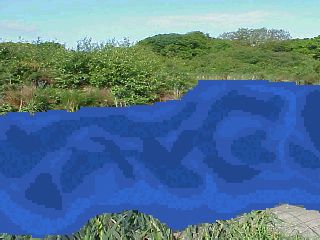
There are no sudden drops or ledges, they all roll pretty smoothly into one another, hopefully this will mean that just moving the bait position slightly will result in increasing or decreasing chances of certain species. On the right of the peg, i've created an underwater bank ( shown in lighter blue above ), virtually splitting the peg into two, and on the right hand side of this ( just out of the shot above ), created the largest deepest hole. The channels, the hole and the complexity of the depth can be seen a lot clearer on the contour sketch for the peg below :

All I have to do now, is remember roughly how deep the channels and holes are, so that when it comes to creating the stk files for the bream, which is the main species I want affected by the depth, I can get it spot on. As far as the skimmers go, i'm going to make these obviously prefer the deeper holes, but be a lot more flexible in the depths of the areas they will feed. This will ensure that there is a ready supply of small bream all over, but the best bet to catch more will be on the bottom of the holes. To catch the really big bream, then these areas are going to be an absolute must. The only other fish species that i'm currently thinking about specifying a WDEPTH for is the perch, crucians and bigger roach. I'm not sure about the bigger roach yet, as they are all small here anyway, but it may be interesting to make even 1 lb roach, which would be big here, to feed on the bottom in these holes too. With the perch and crucians, i'm again still not sure yet. Normally, i'd create these two species pretty similar to force them into the margins, but as this peg is so complex and the margins the peg slopes down steeply from the sides, i'm not sure if it will work here. What may happen is that they will both occupy the ridges on the peg. This wouldn't be bad though as it would add character to the peg, but if I do this and am not careful about it, I could end up with a situation where very few, or even no perch would be caught. If i'm going to make the perch heavily reliant on weed cover as well, and don't put any weed on the ridges, then they may prove too elusive.
The reaction of the other species that are not going to have WDEPTH factors added, to the peg depths, will be totally dependent on the environmental changes that result from the depth changes. For example, at a particular time of day, it may be that the bottom of the holes, has a pocket of warmer water. At another time or day, it may be the shallower ridges that have the warmer water. Not just water temperature is affected by depths in FS2, O2, PH, Light etc all are as well.
Putting objects in
The more objects, weed, reeds, mud, rock etc that go into a peg, the more character it has. Without objects in a peg, then the character of it is solely down to the depths, which in itself is probably just enough, but the angler will soon realise that it doesn't really matter where the bait is casted after a while. Like real fishing, anglers fish to objects, it's probably the first thing they look for when approaching a new peg. The other thing an angler does is look for underwater features, like the contours, which was covered above. By specifying more complex depth features and more objects, it will create a more enjoyable experience for the angler, who will have to search the swim for the fish. Of course it will change from time to time, depending on the environment, but the more fishing that is done on it, the more the angler will learn about it and become more proficient. With few contours and few objects, it becomes more about luck than judgement, which is true with real fishing, but anglers at least like to feel they've sussed it, instead of just lobbing the bait anywhere and hoping.
Also, by adding a lot of objects it will be really helpful when creating the stk files later, and give a better control of where you want the fish to be. All objects do is provide cover, and can change the temperature, o2 content, light, PH and salinity of the surrounding area. They also add "colour" to the area they are placed in, and this is a big factor for certain species, as some will try to occupy areas which match there colour. Also with bait presentation, some species are set to search for food using sight, if for example a yellow piece of corn is casted onto a yellow sandy area, it doesn't show up as much as if it was casted onto a green weedy area, because the colours don't contrast as much. For this reason, I always try to have at least one object in every area of a peg.
You can create your own objects as well, they are just text files that can be created, if you do though you will need to ship the object file out with the venue it is used in. On top of all of this you can have objects with user defined factors. These can be useful for creating areas of a peg that will either appeal or not to certain species or stocks. I am not sure yet whether i'm going to use user defined factors on this peg or not, i'll go with instinct first, and add "normal" objects which look like they will be present in areas. You can add the same object more than once to an area and it will have a comulative effect on that area.
For example, if you have a water heater object, which I don't use, but it makes a good example. The default water heater object ( heater.fso ), has a line in it which reads TEMP = 1.2, this means that say an area of water would normally be 10 degrees, this will change it to ( 10 x 1.2 = 12 degrees ). If you place two water heater objects in the same area, which is normally 10 degrees, this will increase the surrounding area to ( 10 x 1.2 x 1.2 = 14.4 degrees ). You could easily create a water cooler object by, say, having the TEMP line in the object set to 0.9 or lower.
I've started by adding objects using the add button, i've added two mud objects, one of which i'll use to cover the entire peg to give it a base, the other i've drawn on to cover the deep channels and holes to encourage the bream and tench, as below :
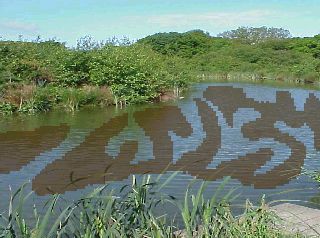
I've also added a lilly object, and two reed objects as well as a couple of overhang objects for the far bank as well. I am going to use some new weed objects i've created specifically, instead of the default weed object. The problem, I find with the default weed object is that it provides too much cover, so i've created a series of different coloured weeds that provide less cover, but these can be banked on top of one another in places to provide varying levels of cover. I am intending to make the peg quite weedy in places to fit into the "feature packed" spec. Also for the far bank, i've added a tree root object so that a few small ones can be put in select places, by the tree/bushes. Also, at this point, i've got to remember to put some weed in the shallower areas of the peg, so that these areas will be useful spots for perch to hang out.
The way I do the objects is to place t4hem in large chunks ( filled areas ). With the XGrad and YGrad being only set to 5 pixels, it would require very accurate casting to hit the same spot each time, but if they're in large chunks a less accurate cast is needed. Sometimes with things like rock and weed, I splatter the peg as well with single 5x5 blocks in a random fashion, but this is on top of the larger chunks.
The image below shows the colours of all the objects on the peg merged, as can be seen, i've left some large areas, mainly on the centre left as just mud, with very little cover, the channels in these areas should be good for the bream. Also the deep hole on the right is surrounded by weed going down, with the deepest part in the centre being barren. This should be ideal for carp on cooler days, and also tench in the summer. There is a very heavy weed cover on a couple of ridges too, which should see species like perch and crucians showing there. The heaviest cover is located around the margins, which should, all being well be the places to get the carp at night time.
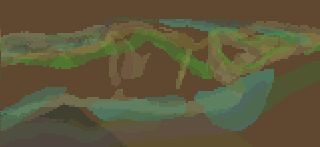
The next image below shows the high covered areas of the peg a bit more clearly.These two images are generated from a part of the code that I just implemented into FS2 to produce them for this page. The cover image below, actually shows cover values ( 0 - 100 %) but the resize of the image has distorted these. The very light areas are between 70 and 100 % with the dark areas being 0. The mid grey areas, on this peg are coming through as between 13 and 30 %. These figures should hopefully help when creating the stk files later.
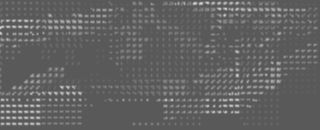
One final thing with objects, always add an extra object to the bottom of the list which isn't used. Until version 2.06 there was a bug where the last object wasn't recognised. This bug wasn't obvious though, because it all goes on behind the scenes, but a few tests showed that the last object in the list isn't picked up, so by adding an object to the bottom, this cures it for all versions.